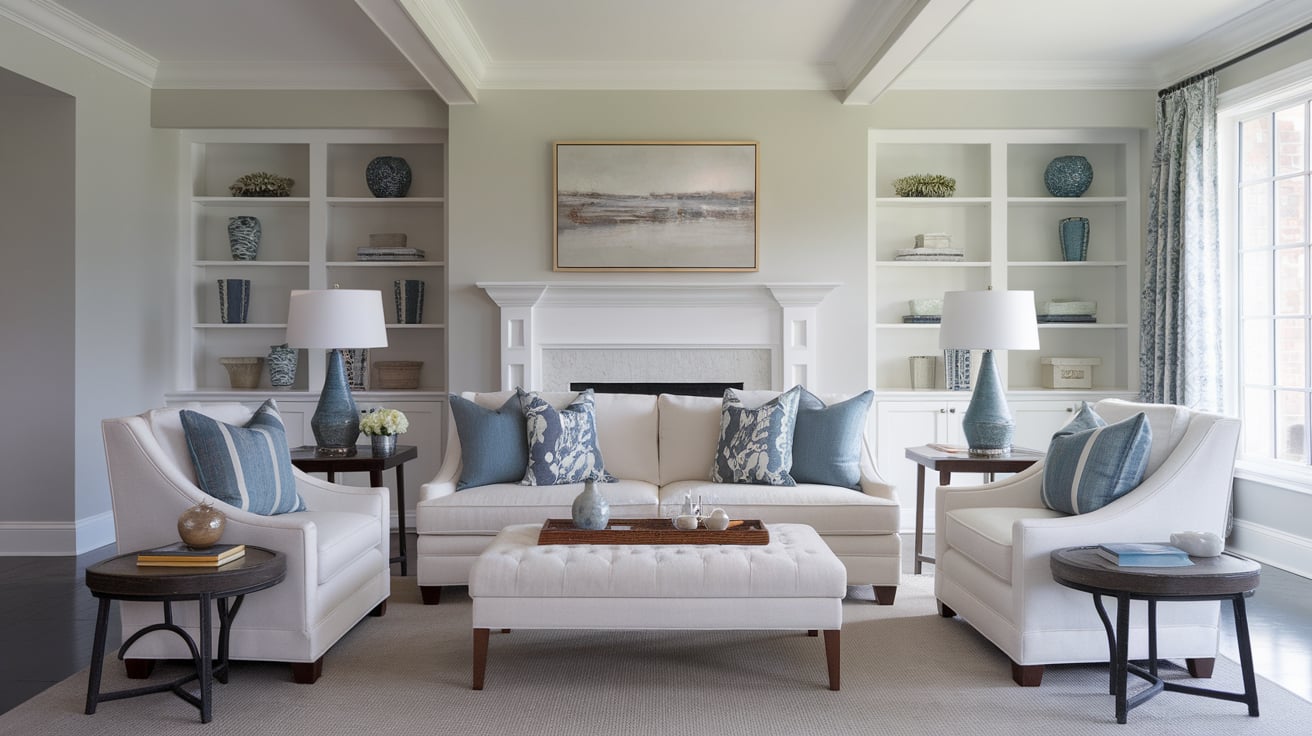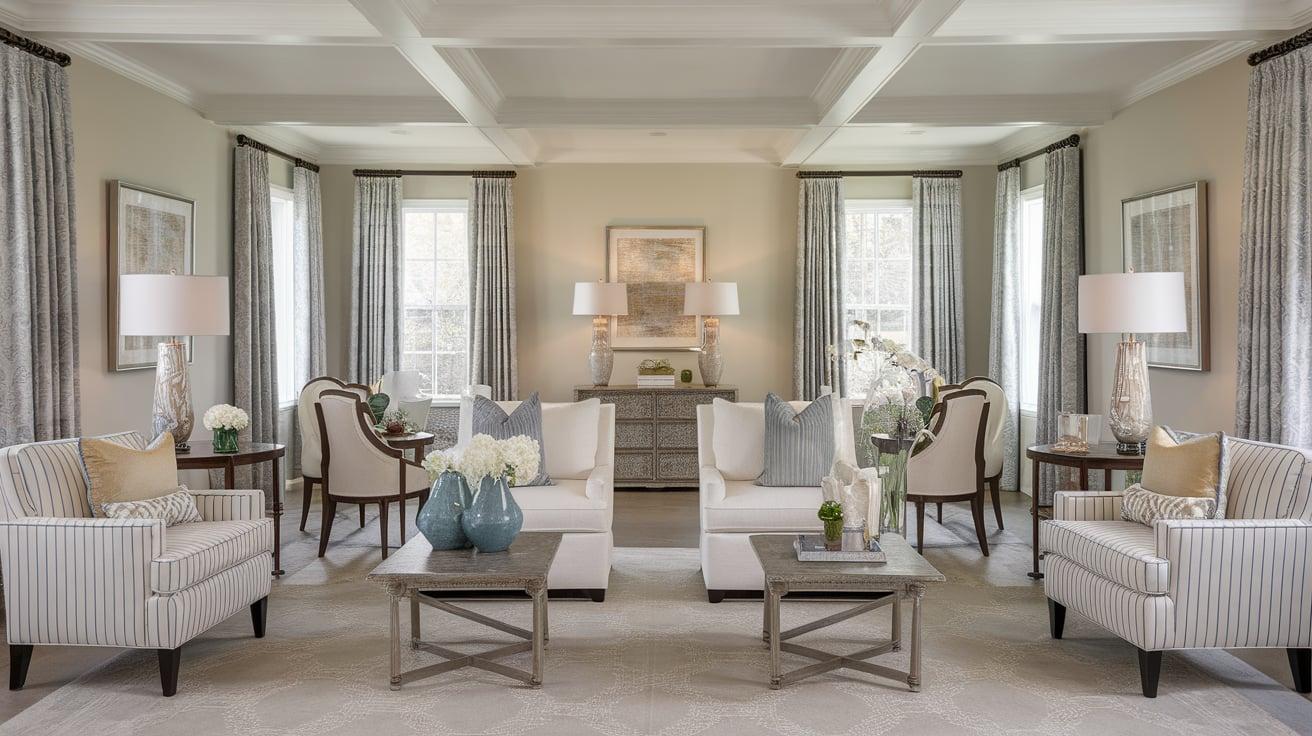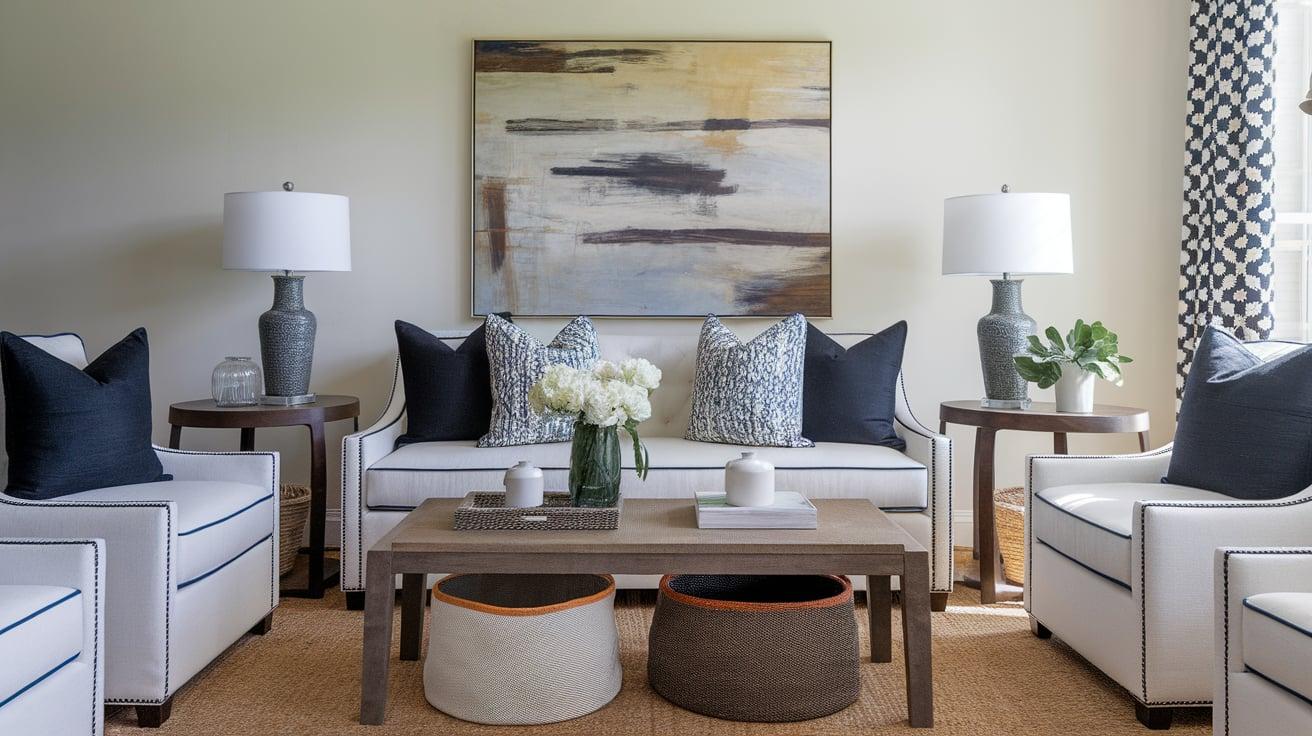Most homeowners want a well-planned room that feels stable and neat. Yet, creating this feeling can be hard when you don’t know where to start.
Despite our best efforts, many spaces end up looking messy or unfinished.
I can help you fix this common problem with simple methods. By using symmetrical balance in your home, you’ll create spaces that feel calm, ordered, and well-designed without fancy tricks or big budgets.
This guide will explain symmetrical balance, why it works so well in homes, which tools and items you’ll need, and how to use it in different rooms.
You’ll also learn how to avoid making your space too stiff and how to mix this method with other design ideas.
What Is Symmetrical Balance?
Symmetrical balance is a key design rule that creates a sense of order in a space. When items match on both sides of a center point, they form a balanced look.
Think of your face: one eye on each side and a nose in the middle. Rooms work the same way.
Perfect symmetry means making exact mirror images. When you place the same lamp on each end of a sofa, that’s ideal symmetry. The center point might be a coffee table or TV stand. Each side has the same weight and look.
Approximate symmetry uses close items but not the same. For example, you might have chairs of the same size but in different colors on each side of a room.
You see symmetrical balance daily in:
- Two table lamps on a dresser
- Matching nightstands beside a bed
- A fireplace with the same number of items on each side
- Two chairs facing each other across a coffee table
- Wall art hung in pairs or groups of even numbers
This type of balance feels calm and planned, giving rooms a finished look that’s pleasing to the eye.
Why Choose Symmetrical Balance for Your Remodel?
-
Natural Harmony: Symmetrical balance creates a sense of ease and comfort. Our brains are naturally drawn to balanced designs, making the space feel more inviting.
-
Perfect for Formal Spaces: It works well in living rooms, dining areas, and even family rooms, adding a polished and organized feel with equal items placed on either side of a central point.
-
Universal Appeal: The clean lines and tidy layout of symmetrical balance are universally appreciated, making your space feel well-kept and welcoming.
-
Works with Bold Decor: Even with vibrant colors or unique pieces, symmetry helps keep things cohesive. Matching frames or paired lamps can balance bold design choices.
-
Simple and Effective: Symmetry offers a straightforward approach, making it easier to plan and execute a remodel without overcomplicating the process.
Tools and Elements for Achieving Symmetrical Balance
| Category | Key Items | How to Use |
|---|---|---|
| Furniture |
|
Place on opposite sides of a center point with equal spacing |
| Decor |
|
Use in pairs and arrange at equal heights and distances |
| Architectural Features |
|
Use as focal points or center lines for your design |
| Anchoring Elements |
|
Place in the middle to create a central axis that other items can balance around |
Pro Tip: Start with a floor plan that marks your center line. This helps place items with the right spacing and keeps the visual weight equal on both sides.
Changing Specific Rooms with Symmetry
1. Living Rooms
Center your sofa across from matching chairs. Add twin lamps and similar side tables. Use a fireplace or TV as the middle point with equal decor on both sides.
2. Bedrooms
Place the bed in the center with matching nightstands and lamps. Hang identical pictures above each nightstand. Add mirror-image dresser setups for a calm, sleep-friendly space.
3. Home Offices
Position your desk in the middle with equal shelf units on each side. Use paired lamps and similar storage boxes. Keep both sides of your workspace equally tidy for better focus.
Symmetry in Combination with Other Design Techniques
1. Symmetry + Contrast
Use items of the same shape but different colors on each side. Place light objects against dark backgrounds. Mix shiny and matte finishes in your paired items for visual interest while keeping the layout balanced.
2. Symmetry + Texture
Add depth with matching furniture in contrasting fabrics. Pair smooth surfaces with textured ones (glass lamps on wooden tables). Use similar baskets or bins with different textures but the same size and placement.
3. Symmetry + Eclectic Style
Keep the layout balanced but vary the details. Use furniture with the same shape but different patterns. Match the size and placement of items rather than their exact look.
Create a framework of symmetry, then add unique touches within that structure.
Alternative Approaches to Symmetry for More Creative Spaces
- Incorporating asymmetry while maintaining balance: Try using items of similar visual weight but different shapes on opposite sides. For example, place a tall floor lamp on one side, and a medium plant stand with a small table lamp on the other.
The key is making each side feel equally important without using identical pieces. You can also offset a large sofa with two chairs that together take up similar space and attention. - Adding texture and layering to enhance symmetrical designs: Build depth in your symmetrical layout with varied textures. Use smooth glass vases filled with rough branches, or pair silky pillows with nubby throws.
Layer rugs of different pile heights but similar sizes on each side of a room. Add wall treatments like wood panels or textured paint behind matching furniture to create interest while keeping the basic symmetrical structure intact.
Conclusion
Symmetrical balance offers a simple yet effective way to improve your home. By placing items with purpose on both sides of a center point, you create spaces that feel calm and well-organized.
This approach works in any room, from busy living areas to quiet bedrooms. The key is finding the right balance and enough symmetry to feel orderly without making your space feel stiff or boring.
Remember that perfect pairs aren’t always needed. Sometimes, items that match in size but differ in color or texture create more interest while keeping a balanced feel.
As you plan your next room update, start with a center line and build outward.
Place furniture, lighting, and decor with equal weight on both sides. Your space will look pulled together, and more importantly, it will feel right when you walk into it.
Frequently Asked Questions
1. What Is the Golden Rule in Interior Design?
The golden rule in interior design is to create balance while making spaces functional, comfortable, and visually pleasing to their users.
2. What Is the 60-40 Rule in Interior Design?
The 60-40 rule in interior design suggests using your dominant color in 60% of the space, your secondary color in 30%, and an accent color in the remaining 10%.
3. How Many Colors Should Be in a Room When Decorating?
For most rooms, stick to three colors: a main color for walls and large items, a secondary color for furniture, and an accent color for small touches and details.















